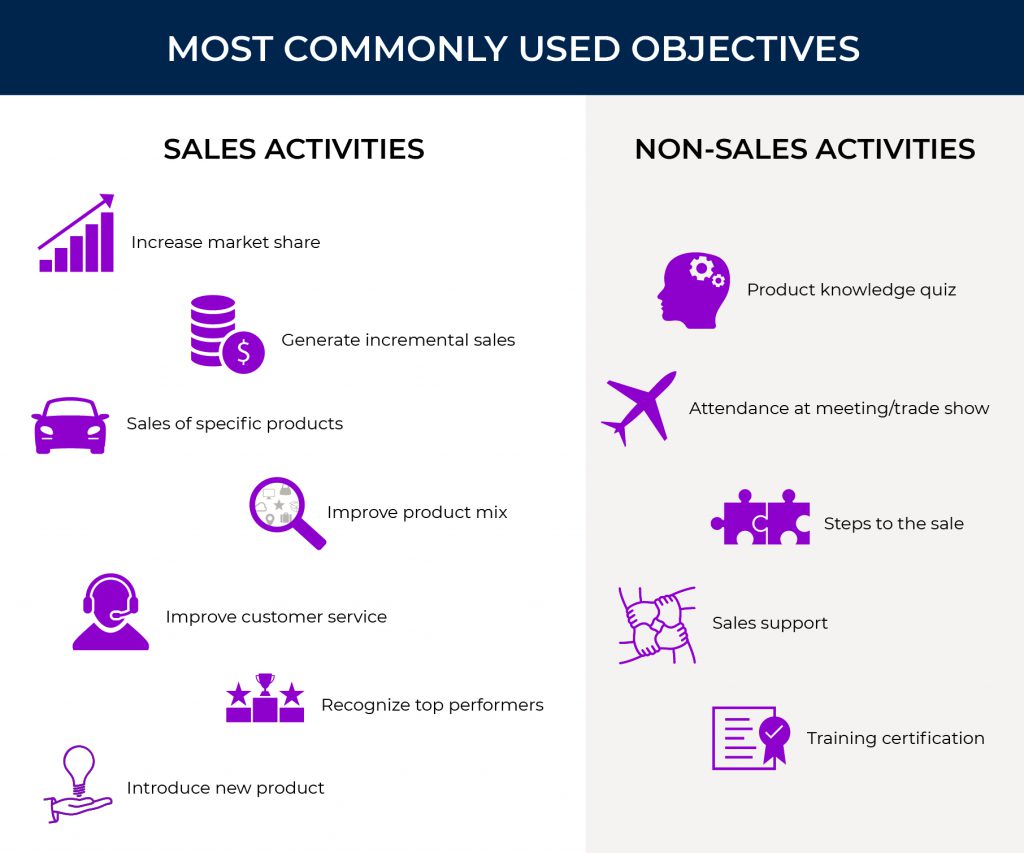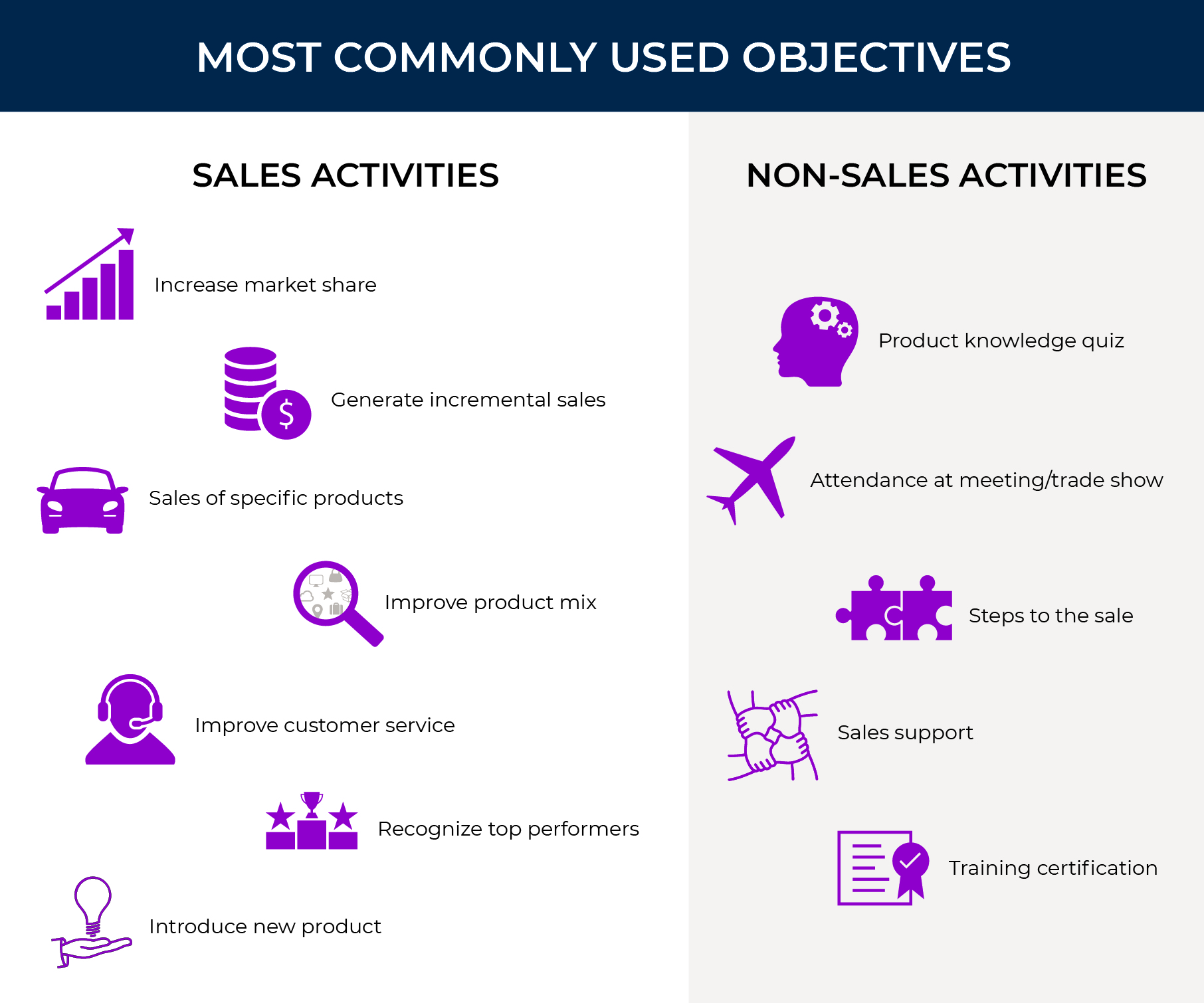You’ve recognized that it’s time to improve the relationship between your brand and your sales channels, and you’ve realized an incentive plan that includes a rewards program is an excellent first step. Congratulations! You are making the critical business decisions necessary to establish trust and build (and deepen) relationships with crucial members of your internal and external team.
However, your work has just begun. Creating a sales incentive rewards program is not a “build it and they will come” situation. Effective incentives must be properly designed with the end in mind, enhanced by gamification or other engaging elements, and flawlessly executed every time. Your program must motivate your team and continue to foster this excitement throughout the process, which will lead to increased participation. When planned and executed effectively, this will align your team around your goals and help positively impact your bottom line.
For a sales incentive program to be successful, you must create a culture of fairness that instills high levels of trust and commitment from your participants.
Rules drive desired behavior
Rules are everywhere. In all aspects of life, rules encourage desired behavior. Certainly, there are plenty of rules when we are young, at home and at school, as we learn how to be part of family and community. There are “rules of the road” that dictate how we should drive to keep us and everyone around us safe. Before we start any type of game, we read the rules so we know the goal, how to play and who wins. How can you play the game if you don’t know the rules? Your sales incentive plan is no different.
Therefore, developing an effective rules structure is one of
the most important aspects of any successful incentive and
recognition program. Rules help build trust between your organization and
the participants—giving them a clear understanding of your expectations and
what it will take to succeed. Rules
should also reflect an understanding of the effort required to win so
participants view the program as fair and a good use of their time. And, rules
should encourage healthy competition while still supporting a sense of “team”
in order for your organization to accomplish its business objectives, as a
whole.
Consistency also matters. Short-term spiffs and special bonuses can be highly effective in keeping participants engaged. However, they must be structured in a way that aligns to the rules set forth in the overarching program. Don’t invite confusion—rewards for behaviors that are inconsistent with or, worse, contradict the main program rules will demotivate your participants and create distrust in the program (and you!).
Specific objectives are key
The rules of your sales incentive program should directly relate to your business objectives. Why are you starting in the first place? Do you want to increase your terms of units? Your revenue? Your net bottom line? Are you hoping to decrease your steps to the sale? Setting specific objectives are a strong foundation for a successful and motivating experience.
Here’s a helpful guide to set specific objectives for your incentive:
- Measurable: Can you track performance by using existing systems and processes?
- Realistic and attainable: Will at least half of your target audience find your incentive plan challenging, yet achievable?
- Manageable: Is success based on activities your participants can control?
- Aligned: Is your program aligned with your corporate objectives and vision? Organizational objectives can be translated into individual goals so your participants are motivated to make a personal commitment to achieving these goals.
- Focused: Are you overwhelming your participants with too many objectives? One to three objectives are ideal.

Technology makes it easier
You’ve identified your audiences, clearly communicated the rules, and have set specific objectives that tie back to your overall business goals. Now, you must ensure that your participants stay as engaged as possible throughout the process. In other words, you need to make your site sticky! Having the right technology powering your sales incentive platform is vital to making this possible and ensuring you put the needs of your participants first.
Think about how you use technology. Chances are your mobile phone is within reach at all times. You jump into action when sound notifies you of an incoming message. You get frustrated when a website doesn’t load fast enough or doesn’t deliver your desired information. We all want technology that is quick, responsive, and useful. Your sales incentive participants are no different.
We don’t want to lose program participants because the platform is frustrating. That’s why we meticulously develop incentive technology with user-centered design. To make it as simple as possible, user-centered design is developing something so you don’t hate using it. We don’t want our participants to hate using the technology, so here’s how you get started with a user-centered approach:
- Research: First, you must gather data to understand the needs of your sales plan participants. Using this data, create personas to form empathy and understanding of individuals—this is different from market research. Instead, personas are fictitious characters that help us generalize what’s most important to this unique group of sales program participants.
- Design: When we better understand what’s relevant to our audience in the research phase, we can begin to design a sales reward program around their needs.
- Evaluate: User-centered design is just like a science experiment. You develop a hypothesis based on your data and test to see if it holds up. Testing is key to a successful program. Put your preliminary plans in front of your participants so you can evaluate success early in the process. If the outcome is not working, go back to the design phase to adjust and refine your technique.
- Deploy: User-centered design is cyclical, and an excellent participant experience is a moving target. In an effective program, you are continuously evaluating and discovering if your model still meets the needs of your participants.
Mobile-First Design
We rely on our mobile devices a lot. Our cell phones aren’t just used for calls. Instead, they are our camera, our navigational device, and our means of checking email. Tablets are used on-the-go to keep us connected without having to lug around a laptop. When you need to look something up online, you most likely turn to your mobile device first before opening up your computer. But, too often, websites are designed for your desktop computer instead of your phone.
We’ve changed the way we approach sales incentive technology by creating the platform with a mobile-first design—this means we have designed around the smallest screen. The design process is different from a traditional responsive design that rearranges all of the content of a desktop site onto a smaller screen for your phone or tablet. Traditional responsive design doesn’t prioritize the mobile user experience. But mobile-first design does.
With mobile-first design, you start by including only the items that make sense to put on a phone. After the mobile design is determined with the essential elements included, then you add features and content that are relevant on larger screens – from phone to tablet to laptop and finally to desktop.
This is especially important for our mobile workforce, like busy salespeople whom we are asking to participate in a sales incentive program. With fewer distractions, users have a better experience with the platform technology and stay engaged and motivated to participate in the incentive and recognition program. When your sales incentive program participants are engaged, the fun begins. When your participants are engaged, they are active. With activity comes invaluable data that you can track in real-time. You can quickly see what products are selling faster than others. You can better understand what regions are more active than others. You can identify if certain user groups aren’t even using the incentive program so you can refocus communication efforts there. More importantly, you can excite your team, appropriately reward them for their efforts, and meet your business objectives.


